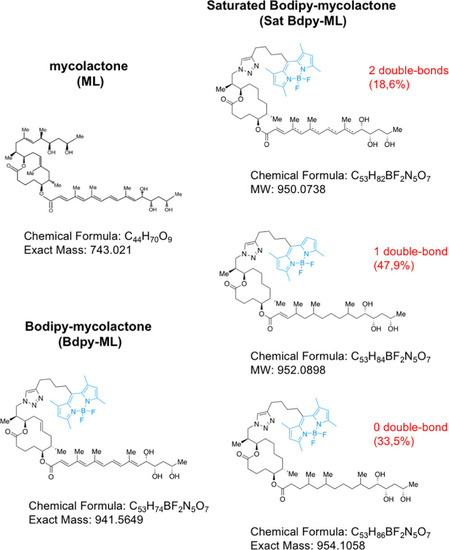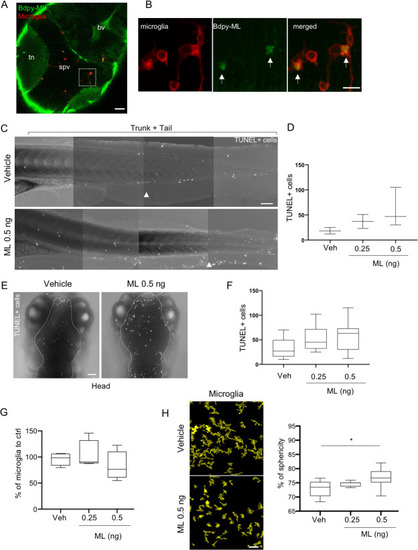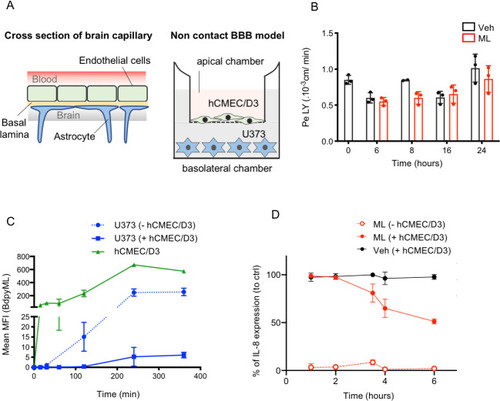- Title
-
Spatiotemporal analysis of mycolactone distribution in vivo reveals partial diffusion in the central nervous system
- Authors
- Colucci-Guyon, E., Rifflet, A., Saint-Auret, S., da Costa, A., Boucontet, L., Laval, T., Prehaud, C., Blanchard, N., Levraud, J.P., Boneca, I.G., Demangel, C., Guenin-Macé, L.
- Source
- Full text @ PLoS Negl. Trop. Dis.
|
Natural ML is constituted of a lactone ring on which are appended two polyketide chains. In Bdpy-ML, the shortest polyketide chain was substituted with a bodipy fluorophore. Saturation of Bdpy-ML’s resulted in Sat-Bdpy-ML, a mixture of compounds presenting two, one or no double bounds within the longest polyketide chain (dotted lines indicate the putative positions of the double bonds). |
|
(A) Brightfield lateral view of a larva at 4 dpf with main anatomical structures highlighted. GI, Gastro-intestinal. (B) lateral views of 4dpf zebrafish |
|
Relative fluorescence (to total fluorescent signal) of Bdpy-ML (left) and Sat-Bdpy-ML (right) in blood vessels (BV), muscles, brain and spinal cord, 2 h (light grey) and 24 hpi (dark grey). Data are mean percentages +/- SD. Fluorescence signals were measured on >6 larvae per group with acquisitions in 2 different focal planes (z = 2 μm) for each region, using the same settings. |
|
(A) Confocal imaging of the brain region of a |
|
(A) left panel illustrates the basic structural organization of the BBB, right panel shows the |
|
(A) UHPLC elution profiles obtained after elution of spleen (left panels) or brain (right panels) lipid extracts from non-infected (Control) or |






